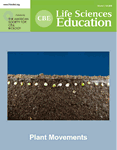Plant Movements Revealed
INTRODUCTION
Each year, as spring returns, I rejoice in the “greening” of the foothills, the blooming of wild flowers and garden perennials, and the first lettuce at the farmer's market. As I thought about which topic to research next on the web, this new growth (it is spring as I write this) led me to explore sites where plant movement has been captured, particularly those using time-lapse photography. This Feature describes online movies for teaching and learning plant biology. All movies are available in the QuickTime format. They are appropriate for high school and college courses, although some could be used at the elementary and middle school level.
PLANTS-IN-MOTION
Roger Hangarter, of the Department of Biology at Indiana University, developed the excellent Plants-In-Motion website (http://plantsinmotion.bio.indiana.edu, Figure 1). The introductory page points out that “plants live on a different time-scale from ours. Although not usually obvious in the relatively hyperactive activities of humans, plants are in constant motion as they develop, search for light and nutrients, avoid predators, exploit neighbors, and reproduce.”
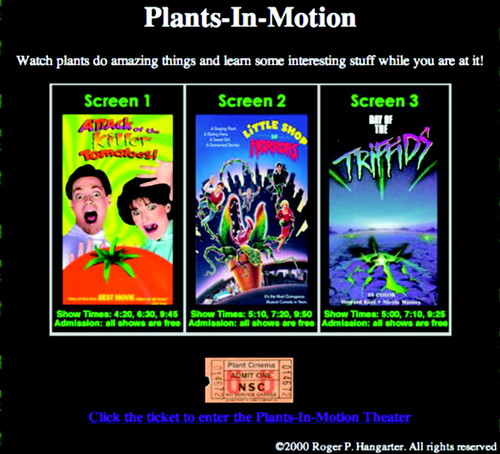
Figure 1. The Plants-In-Motion website includes 40 time-lapse movies of plant movements throughout the life cycle. The home page recalls horror movies based on rampant plant growth.
To reveal the extent of plant movements, Hangarter has produced 40 time-lapse movies. Topics include germination, photomorphogenesis, tropisms, nastic movements, circadian responses, general growth, flowers, and cellular responses. Each section begins with an overview page that provides background information about the topic. The page for each movie includes more specific details about the video, as well as information about how frequently images were captured and the speed at which they are played back. While narration would provide additional assistance in understanding what is being shown in each movie, it probably would be difficult to fit descriptions to their speed. The movies I watched ranged from 10 to 30 seconds in length.
The movies should convey to students of all ages that, despite their apparent static nature, plants are quite active. For example, growing bean seeds is a common exercise in elementary classes. The video of bean leaf circadian movements would help children see the folding down of the leaves at night (when they are not in the classroom), as well as leaf motion during the day (Figure 2). I particularly appreciated the videos of processes that normally cannot be observed due to their long periodicity or because they are happening in the dark or underground. For example, one video shows corn seeds germinating in wet soil. Others show seedlings growing in the dark or under lights of a specific wavelength.
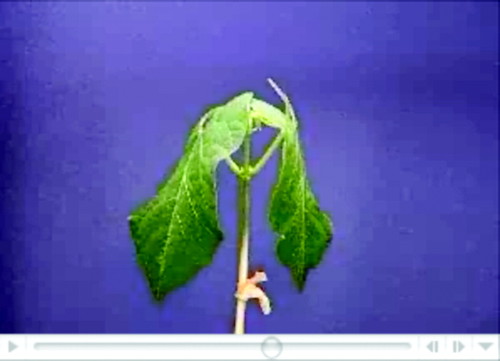
Figure 2. This time-lapse movie from Plants-In-Motion shows the circadian movements of bean plant leaves.
Plants-In-Motion includes extensive directions for making time-lapse movies. These will be useful to instructors who would like to capture plant movements not available on Hangarter's site, as well as students interested in making their own movies, such as for science fair projects. Teachers of younger students may be interested in the instructions (found in the Plant Science Projects section of the site) for making flipbooks from QuickTime movies. These books would be an excellent way to assist students in understanding how time-lapse movies are made and what students are seeing.
Some of Hangarter's movies were used in the sLow life Virtual Exhibition from the Chicago Botanic Garden, which is linked from his site (in the Plant Art section). The virtual exhibit provides a more publicly accessible format and text for the movies, and includes additional videos from other individuals, as well as accompanying sounds.
PLANT GROWTH COMES TO YOUTUBE
Search for “plant time-lapse” on YouTube, and you will find well over 100 short movies (www.youtube.com). The quality of these movies varies, with some (possibly from students' science projects) being less usable due to technical shortcomings. Unfortunately, most of these movies do not include information about what is being shown. I provide two examples of what is available.
BioIrvine's Channel on YouTube includes two plant-related movies (www.youtube.com/user/BioIrvine). “Pollen Germination in vitro” shows time-lapse microscopic views of pollen tube growth in tobacco as well as real-time cytoplasmic streaming and nuclei migrating in front of the most recent callose plug. Occasional text provides information about what is being shown. “Cytoplasmic Streaming in Pollen Tube” shows this phenomenon at higher magnification. Scale bars are always present in both movies, something I did not see in any other time-lapse movies. The first movie is almost two minutes long and the second is a brief 10 seconds. While the movies would be useful for instructors who are familiar with the material and can provide commentary, these movies would greatly benefit from the addition of narration.
His movie postings on YouTube led me to Dave Coleman's Mindlapse website (www.dcpages.net). Mindlapse includes time-lapse movies of corn and radishes, each showing plant growth from seed germination and root growth (underground views) to the seedling stage, all to upbeat bluegrass musical accompaniment. “Racing Radishes” is 45 seconds long, while “Fast Corn” is 10 seconds shorter. The radish movie could be used to illustrate seed germination and root growth for Fast Plants®, since both look very similar at these stages of the life cycle and no scale indicator is included (Figure 3). Information about how the movies were created is available on Mindlapse, but not on YouTube.
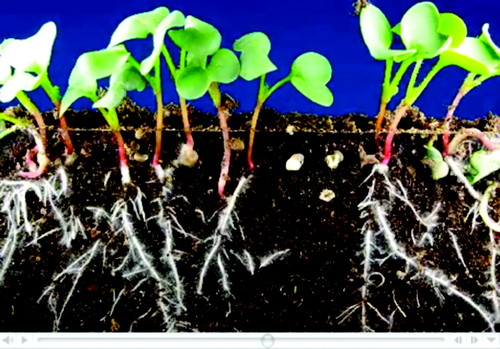
Figure 3. The Mindlapse website includes time-lapse movies of radish (shown here) and corn seed germination and seedling growth.
A VERY FAST LOOK AT FAST PLANTS®
Fast Plants®, developed by Paul Williams at the University of Wisconsin–Madison, is an outstanding model organism for teaching at the elementary through college levels. The Wisconsin Fast Plants® Program website provides numerous teaching resources, including two movies (www.fastplants.org). The Introduction to the Fast Plants portion of the site includes a section on the Fast Plant life cycle. A time-lapse movie shows the plants' life cycle from seedling emergence through drying of the siliques and plant senescence (Figure 4). The reproduction video appears to be the same, but starting at the true-leaf stage of growth. A new movie, designed to facilitate inquiry, incorporates these time-lapse movies along with footage of Williams describing how he used plant breeding techniques to develop Fast Plants. This movie is available on YouTube (http://youtube.com/watch?v = 73S63xV_o34) and TeacherTube (www.teachertube.com/view_video.php?viewkey=ed00d7a8051581843216). TeacherTube was launched in 2007 by educators to provide an online community that is an “educationally focused, safe venue for teachers, schools, and home learners” (www.teachertube.com).
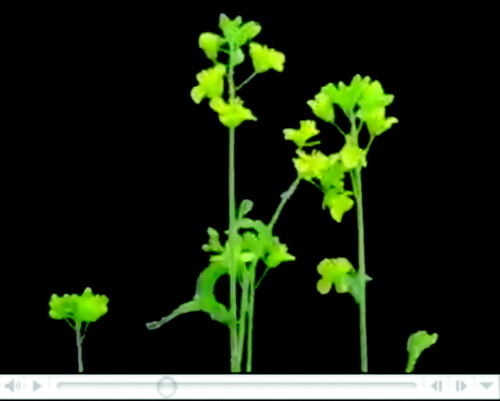
Figure 4. The Wisconsin Fast Plant® Program website includes time-lapse movies of the entire life cycle for these plants.
CARNIVOROUS PLANTS
Everyone loves to watch carnivorous plants, which provide one of the few opportunities to observe plants make rapid movements without the use of time-lapse photography. The “Peter's Savage Garden” section of the San Francisco Exploratorium's website includes three engaging movies about these plants (www.exploratorium.edu/gardening/feed/peter_savage_garden). The movies were produced from interviews with Peter D'Amato, who began growing Venus flytraps (Dionaea muscipula) when he was 11. His hobby eventually became a business, California Carnivores. In one movie, he talks about carnivorous plants in general, including the largest one (Nepenthes rajah), which can capture and digest rats down to their bones. This movie is almost six minutes long.
In “Venus Flytrap Feast,” D'Amato demonstrates how these plants catch insects, and briefly describes the mechanism (Figure 5). I was fascinated to learn that the cells on the outside of the modified leaves elongate less than a second after appropriate triggering, causing the leaf shape to change from concave to convex and closing the trap. In “Inside a Pitcher Plant,” he describes how a chemical in the nectar intoxicates insects to the point that they drown. Before this happens, they become so lethargic that he has petted house flies. D'Amato cuts open a plant to show the variety of insects it has caught and what “ravenous, gluttonous pigs these pitcher plants can be.” Both of these movies are slightly less than two minutes long.
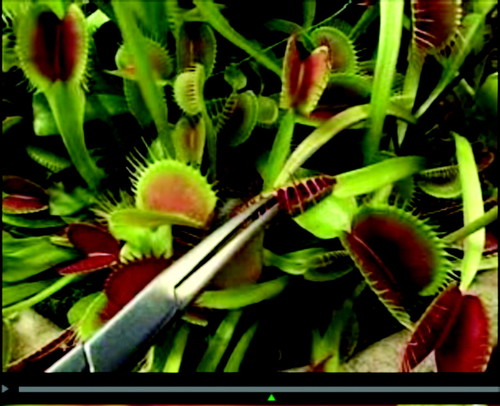
Figure 5. Frame shot© Exploratorium. www.exploratorium.edu. The Peter's Savage Garden movies on the Exploratorium's website focus on carnivorous plants, such as this Venus flytrap.
Unfortunately, the movie players on Peter's Savage Garden do not include Play or Pause buttons; they begin playing immediately after you click on the link. Therefore, it is not possible to pause a movie to discuss a frame with students.
RELATED WEBSITES
If you are interested in growing carnivorous plants in the classroom, visit Patrick Sweeney's Classroom Carnivory website, developed for the Missouri Science Teaching and Education Partnership (MO-STEP) program in the Department of Biology, University of Missouri–St. Louis (http://dousta.umsl.edu/patrick/carnivory). The site includes a description and photographs on how to set up a terrarium, as well as recommended plants to order from California Carnivores. You also can download an accompanying poster with brief information about these plants and a cladogram showing the convergent evolution of four types of carnivorous plant traps. Sweeney mentions using carnivorous plants to introduce nitrogen cycling. I would like to have seen instructional materials or suggestions for this topic.
The Botanical Society of America (BSA) website has extensive information about carnivorous plants (www.botany.org/Carnivorous_Plants). A brief introduction is followed by a representative photograph of each genus. Most of the genus names below the photos are links to a page with additional photographs and information. Unfortunately, the links that I tried to reach for abstracts of related American Journal of Botany articles were all broken. Those interested in learning more details about Venus flytrap closure (which has not been fully elucidated) will want to read about the genus Dionaea. The BSA's Mysterious Venus Flytrap page is appropriate for middle and high school students (www.botany.org/bsa/misc/carn.html). It summarizes information from the Dionaea page and includes information on growing and caring for these plants.
ACKNOWLEDGMENTS
I thank A. Malcolm Campbell for critical comments and helpful suggestions on this article.


